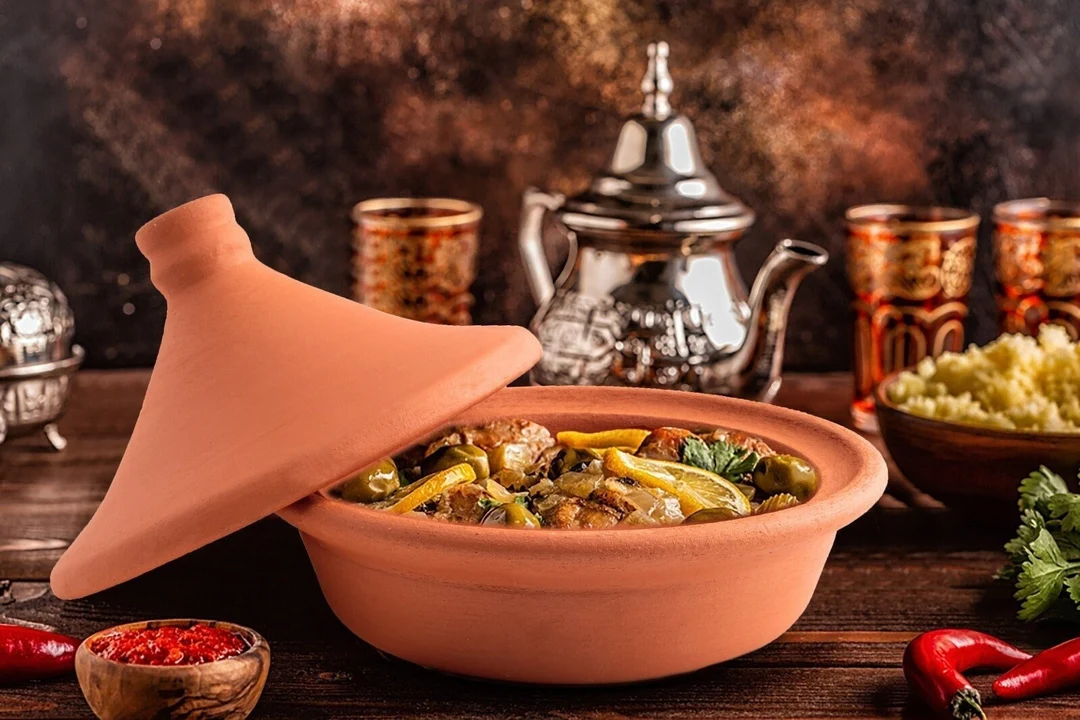Foods of Morocco: A Flavorful Guide for Curious Tourists
Morocco is a feast for the senses—from its maze-like medinas and sun-drenched landscapes to its warm hospitality and centuries-old traditions. Yet, what truly sets this North African gem apart for travelers is its unforgettable cuisine. The foods of Morocco are more than just meals—they’re cultural stories served on a plate, crafted with love, layered spices, and regional flair.
For adventurous and curious tourists, Moroccan cuisine offers an invitation to explore the country through flavor. Each dish carries with it the essence of Berber, Arab, Mediterranean, and Andalusian influences. Whether you’re strolling through the vibrant souks of Marrakech or sharing a meal with locals in Fez, the foods of Morocco are as much a part of the journey as the destination itself.
In this guide, we’ll explore the must-try traditional dishes, street foods of Morocco, dining customs, and insider tips every traveler should know to enjoy a truly authentic culinary experience in Morocco.
Questions? Chat with us now on WhatsApp for a quick response!
1. Couscous – The Heart of Moroccan Hospitality
Couscous, Morocco’s beloved national dish, is more than a meal—it’s a Friday tradition, a family ritual, and a symbol of togetherness. Steamed to perfection, the fluffy semolina grains are often served with a savory stew of root vegetables, chickpeas, and either lamb, chicken, or beef.
- Tip: Try couscous on a Friday afternoon, traditionally the day Moroccan families gather for a shared meal after prayer.
- Where to try: Look for local restaurants (called riads) in Fez or Rabat serving handmade couscous rather than pre-steamed varieties.
2. Tagine – Morocco’s Signature Stew
A slow-cooked delight, tagine is named after the conical clay pot in which it’s prepared. These stews come in many forms—lamb with prunes and almonds, chicken with preserved lemons and olives, or vegetarian mixes with spices and dried fruit.
- LSI Keywords: Moroccan stew, slow-cooked meals, tagine recipes
- Where to try: Sample tagine in the Atlas Mountains or coastal cities like Essaouira where fresh seafood tagines are a highlight.
3. Pastilla – A Savory-Sweet Sensation
Pastilla is a regal dish that showcases Morocco’s flair for balancing sweet and savory flavors. Traditionally made with pigeon (now often chicken), it’s wrapped in flaky warqa pastry, dusted with cinnamon and powdered sugar, and stuffed with spiced meat and ground almonds.
- Pro Tip: Order this dish at special events or high-end restaurants—it’s considered a festive delicacy.
- Where to try: La Maison Arabe in Marrakech is famed for its authentic pastilla.
4. Harira – The Soul-Warming Soup
Harira is a staple during Ramadan but also a comforting year-round favorite. A rich tomato-based soup made with lentils, chickpeas, rice, and fresh herbs, it often includes tender lamb or beef.
- Eat Like a Local: Pair your bowl with chebakia (sesame honey pastries) for a traditional touch.
- Where to try: Family-run cafes in Meknes often serve the best home-style harira.
5. Zaalouk – Smoky, Spicy Eggplant Magic
Zaalouk is a cooked eggplant and tomato salad bursting with flavor. Blended with garlic, cumin, paprika, and olive oil, it’s a must-try side dish or dip.
- Tip: Enjoy it as a starter with warm Moroccan bread like khobz.
- LSI Keywords: Moroccan salads, eggplant recipes, vegetable side dishes
6. Mint Tea – Morocco’s Drink of Hospitality
Known affectionately as “Moroccan whisky,” mint tea is a symbol of hospitality. Served in ornate glasses, often poured from a height to create foam, it’s as much about the ritual as the drink itself.
- Customs: Refusing a glass is considered impolite—accepting shows respect.
- Where to sip: Rooftop cafes in Chefchaouen or coastal tea houses in Tangier.
7. Breads of Morocco – More Than Just a Side
Bread isn’t just a side—it’s a utensil and an essential part of Moroccan life. From the round, rustic khobz to the buttery, pan-fried msemen, bread is served with nearly every dish.
- Tip: Visit a ferran (neighborhood bakery) in the early morning to see locals bringing in their dough for communal baking.
- LSI Keywords: traditional Moroccan bread, Moroccan flatbreads
8. Sweets and Pastries – A Taste of Moroccan Indulgence
Moroccan pastries blend almonds, honey, orange blossom water, and delicate phyllo dough to create bite-sized masterpieces. Kaab el ghzal (gazelle horns) and briouats (sweet or savory triangles) are among the favorites.
- Where to try: Local patisseries in Casablanca or buy fresh treats at souks in Marrakech.
9. Street Food – Flavor at Every Corner
Street foods of Morocco is bold, fresh, and unforgettable. From makouda (spiced potato fritters) to sfenj (Moroccan doughnuts), the options are endless.
- Safety Tip: Choose busy stalls with a steady flow of locals—it’s the best sign of quality.
- LSI Keywords: Moroccan snacks, street foods of Morocco, market food
10. Dining Customs – Eat Like a Local
To fully enjoy the foods of Morocco, understanding local etiquette is essential:
- Use your right hand for eating when not using utensils.
- Meals are often communal—everyone eats from the same dish.
- Expect generous portions and multiple courses.
- Finishing everything on your plate may signal you’re still hungry—leave a little to show satisfaction.
Planning Tips for Food-Loving Travelers
- Best Time to Visit: October to April is ideal for both weather and seasonal dishes like quince tagines or almond pastries.
- Food Tours & Cooking Classes: Join a guided food tour in Fez or a hands-on class in Marrakech to deepen your culinary experience.
- Book in Advance: Upscale restaurants and cooking experiences fill up fast, especially in peak seasons.
Savor Every Flavor, Savor the Culture
Exploring the foods of Morocco is more than just indulging in delicious meals—it’s a gateway into the soul of a nation. Every dish tells a story, shaped by centuries of trade, tradition, and hospitality. Whether you’re sipping mint tea in a sunlit courtyard, savoring slow-cooked tagine in a mountain village, or wandering through a spice-scented souk, you’re experiencing Morocco in the most intimate and memorable way possible.
For tourists seeking authentic, luxurious, and culturally rich experiences, Moroccan cuisine offers a unique opportunity to connect with the country on a deeper level. Let your palate guide you beyond the usual tourist trail, into homes, hidden eateries, and unforgettable culinary moments.
We’re here to help! Message us on WhatsApp, and a team member will assist you personally.



